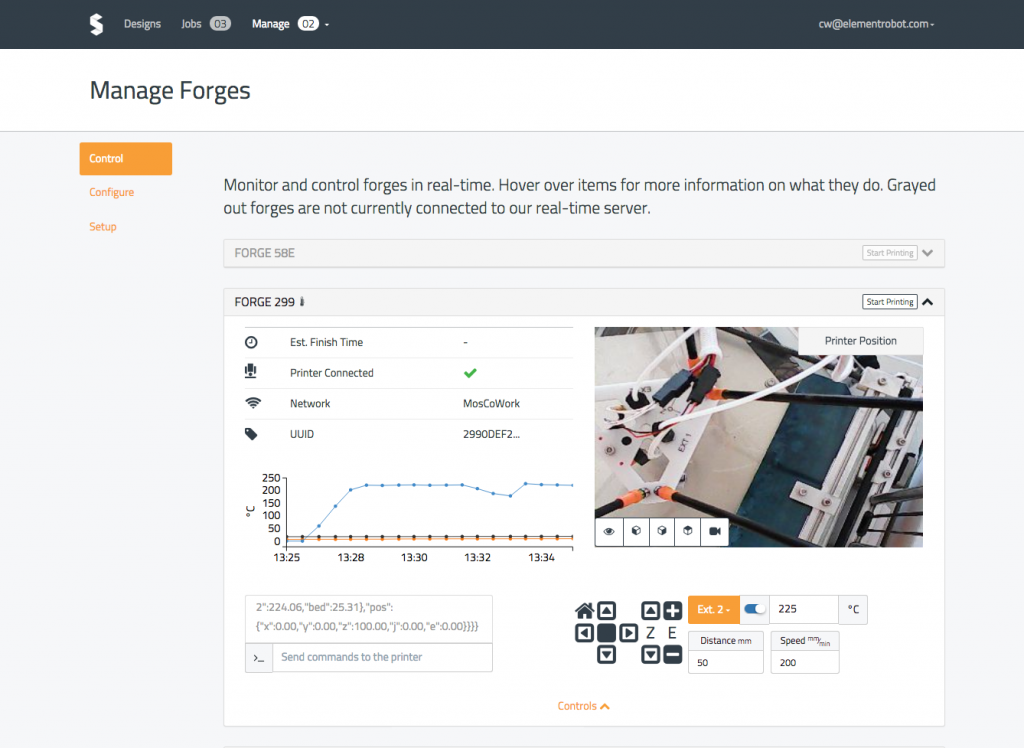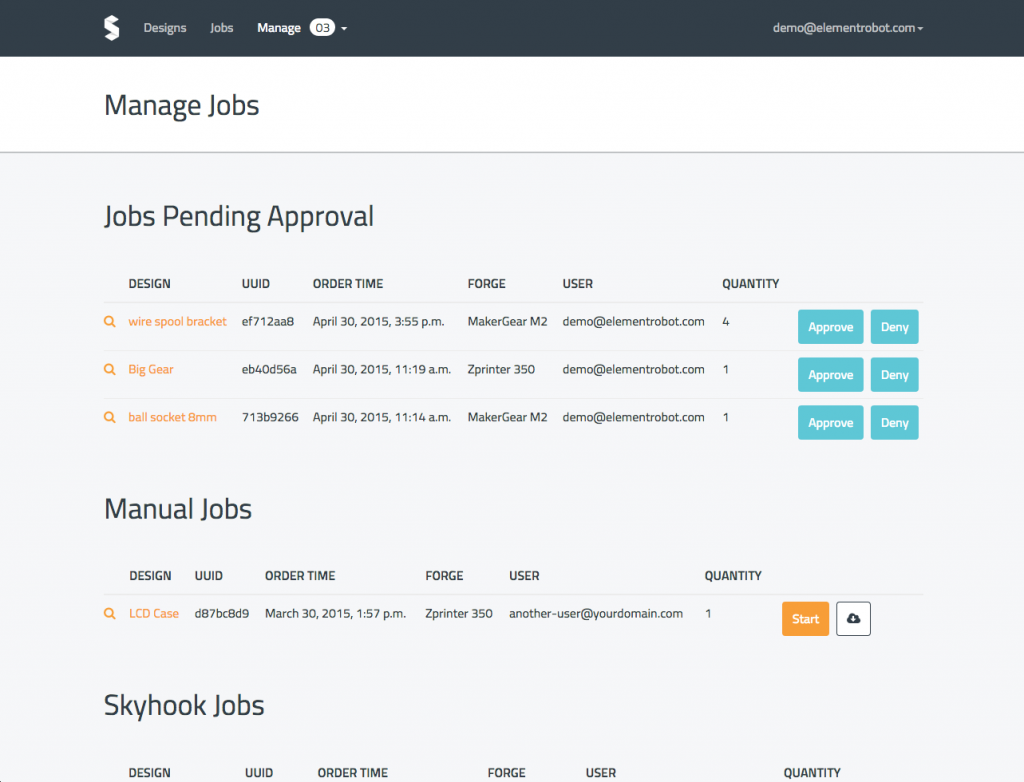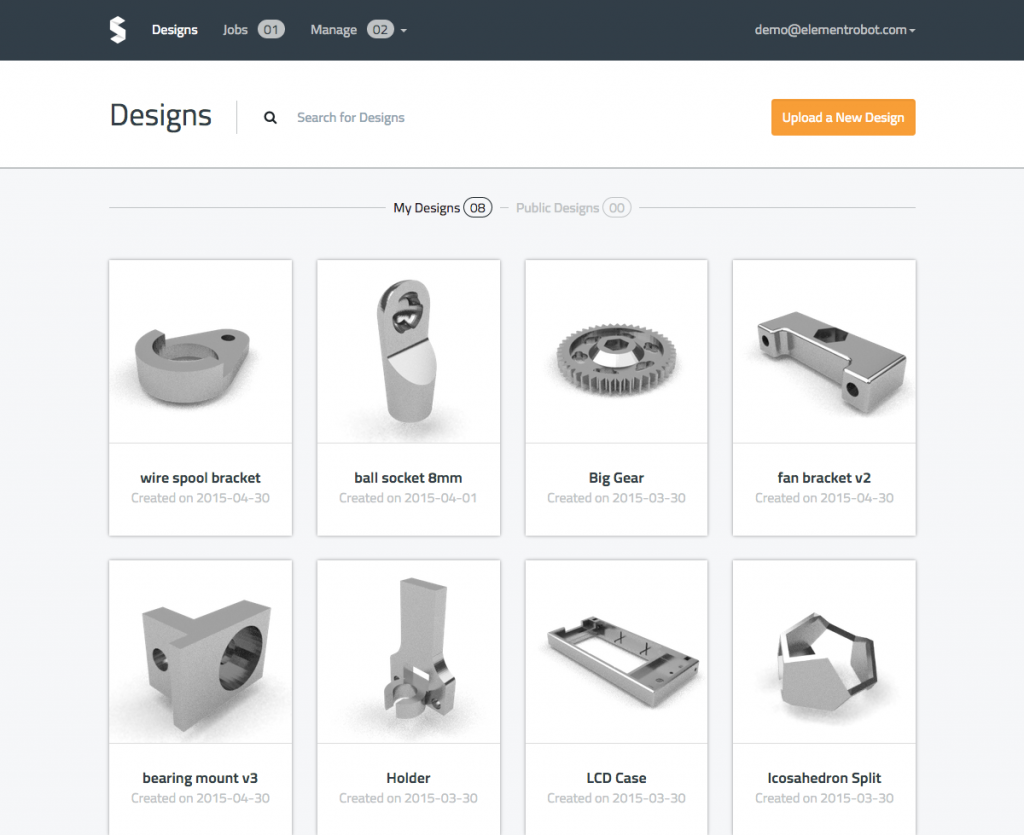One thing you need to remember if you plan on starting a business in 3D printing is that the number one skill you will need is adaptability. In order to hope to succeed, you must be able to rapidly adapt to a changing and very unpredictable business environment. Startup Element Robot LLC did just that as it went from transforming its Skyforge technology from a “3D printing vending machine” at the University of Idaho to a cloud-based enterprise 3D printing management system, used by large multinational companies for their internal 3D printing needs.
“It began as a fun university project based on the assumption that access to 3D printing can be extremely useful for Universities,” says Robot LLC co-founder and CEO Chris Walker. “We decided to begin by introducing a vending machine with a delta 3D printer inside, but we soon realized it was just not reliable enough. So, we took the software infrastructure we had developed and turned to Kickstarter to launch a consumer-centered 3D printing management system.”
However, that also proved to be too limited as the Skyforge team came to realize that consumers don’t generally need to print from their garage or other remote locations. So, they turned to the enterprise world and the response was enthusiastic.
“Even though it did not succeed, the Kickstarter campaign helped us because many companies, libraries, and universities found out about us,” Chris continued. “We signed NTT Data Italy and, more recently, the Fred Marlow at Orillia Public Library in Canada. It became obvious to us that we had to position Skyforge as an enterprise service.” This video shows what the newest version of Skyforge could do for your business or institution (the article continues below).
Skyforge creates a complete ecosystem that lets any company easily implement 3D printing capabilities. Especially in the large offices of corporations, employees can access 3D printers remotely while system administrators can easily manage content in design libraries or set up specific 3D printing policies and user groups, much like a systems administrator would do on the company’s computer network. The human-time requirement for all these tasks is reduced significantly.
Skyforge’s design libraries let users share designs with others, or make them public while the system’s AI links designs and preferred print settings. The system then lets you select a printer from a growing range of pre-loaded machines and visualize an in-browser preview of manufacturing instructions. Every internal order is collected in a unified, automated print queue.
While Skyforge’s is not the only system available to offer these services, it is one of the more affordable and easy to implement. Its goal is to target those companies and institutions that did not necessarily have previous experience with rapid prototyping and are now starting to discover the new possibilities of implementing 3D printing in their workflow. In fact, Skyforge seems to have come full circle as they are once again targeting universities.
“We feel the university and education sector is the one that could most benefit from our service,” Chris revealed. “They often have thousands of potential 3D printing users and, generally, the only way for them to access a 3D printer is to send an email to the library or mechanical engineering department staff members, who download the STL file, copy it on a flash drive, and take it to a free machine. They are basically keeping track of everything in their head, or on a piece of paper. Having access to a simple online platform like ours is a life saver for them.” With 3D printing moving so fast, schools and universities also will need to adapt to a rapidly changing learning environment. Finding a cloud-based software truly capable of managing their 3D printing activities can go a long way toward that goal.




Leave A Comment